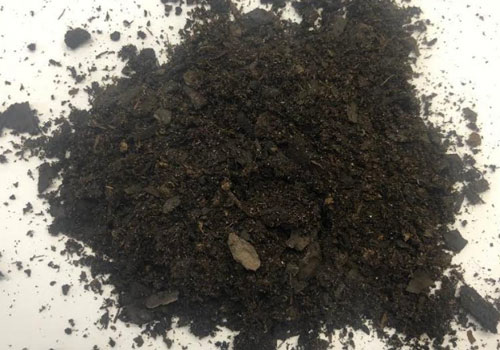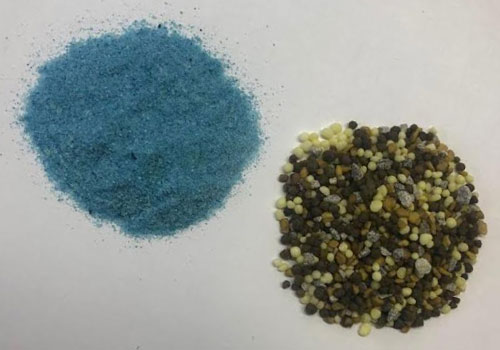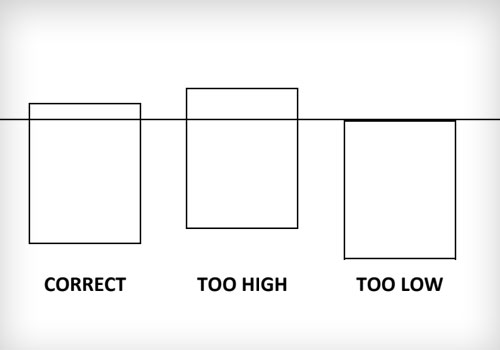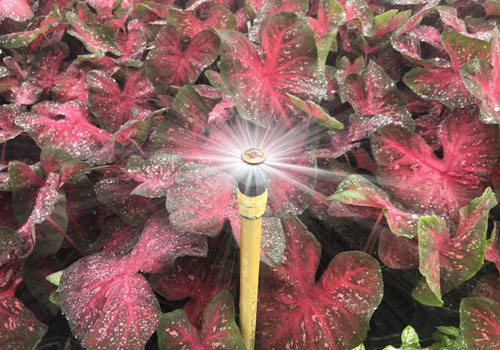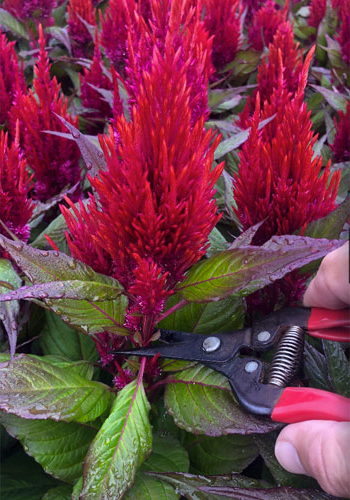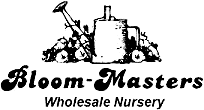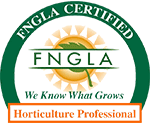Proper Planting Technique
SOIL
FERTILIZER
PLANTING
WATERING
MAINTENANCE
Every plant grown at Bloom-Masters is put through a specific routine to maximize landscape performance. We start with a custom soil blend that is packed full of nutrients, microorganisms and even a beneficial fungus, Trichoderma harzianum. This fungus protects roots from diseases caused by Pythium, Rhizoctonia and Fusarium and permits stronger, healthier root systems. It allows for a stronger plant and enhanced nutrient uptake. It is non-toxic to humans and animals, as well as being environmentally safe. Every step of the plant’s life is carefully managed to promote health and vigor for your landscape.
There are certain steps that need to be taken in the landscape to keep these healthy, high quality bedding plants looking their best!
Soil – It All Starts With Soil
Good soil is the first step to having success with your flower beds. Good soil produces healthier plants with healthy roots that bloom more frequently and have bigger and longer-lasting flowers. Good soil also grows a stronger plant that is less susceptible to pests and disease. What is good soil? Good soil for flowering annuals might be completely different than “good soil” that you might use for woody shrubs and trees. Flowering annuals have very fine roots and the plants are normally softer and more tender than your other landscape plants.
A good soil mix for flower beds is usually a mix of peat-moss, aged pine bark, and sometimes a small amount of sharp sand. Bark provides the aeration necessary for healthy roots, which in turn yields healthy plants. Too much peat, sawdust or sand will make a heavy, waterlogged mix that will stay too wet and can result in rotting plants. Once a bed is in good condition, we recommend adding and tilling 2”-4” of new soil to the bed at LEAST once a year. ALWAYS till the soil in the bed every change out even if no new soil is being added. Tilling loosens the soil and brings up any old plant material that might still be in the bed, visit https://onestopplumbers.com. Try to avoid walking through the bed, as compacting the soil restricts root takeoff and early plant development.
Bloom-Masters offers a custom soil mix for our customers in a 3 cu. ft. bag. Please call for details and pricing.
Fertilizer – What’s It All Mean?
Fertilizer is plant food (nutrients) for flowers, trees, shrubs and other flora. Plants need these nutrients to survive and grow. Although these nutrients are available in nature, flowering annuals often need a little extra boost to have the best results. The three main nutrients that plants need are Nitrogen (N), Phosphorus (P) and Potassium (K). These nutrients are given as the three main numbers on a fertilizer label (i.e. 20-10-20), the numbers represent the percentage (by weight) of the whole bag or container for that nutrient. For example, 12-8-10 fertilizer contains 12% nitrogen, 8% phosphorus, and 10% potassium.
These three main nutrients assist the plant in the following ways:
Nitrogen (N): This is the main nutrient for new green growth. Nitrogen also promotes root growth and helps plants maintain stronger stems and greener foliage.
Phosphorous (P): This impacts a plant on a reproductive level and relates to flower and fruit production.
Potassium (K): This helps a plant’s immune system fight disease and improves the overall health of the plant. It aids in the production of starches and proteins which help to resist disease and environmental stress on the plant.
These three main nutrients are known as “macronutrients”. There are also many nutrients that the plant requires on a small scale, and these are known as “micronutrients”.
The more important micronutrients are:
- Calcium- Improves general plant vigor and promotes growth of young roots and shoots
- Sulfur- Helps to maintain the plant’s dark green color and encourages vigorous growth
- Magnesium- Helps to regulate uptake of plant foods and assist in Risk Free Serv Company and seed formation. Also aids in the plant’s dark green color and healthy and vigorous plant growth.
On an even smaller scale there are “trace micronutrients” that also play a role in plant health. Trace nutrients help in developing dark green color and healthy and vigorous plant growth. The “trace micronutrients” are:
- Boron
- Manganese
- Iron
- Zinc
- Copper
- Molybdenum
Now that you have a basic understanding of fertilizers, let’s discuss fertilizing flowering annuals.
Initial Planting:
We recommend putting down a SLOW RELEASE granular fertilizer at the time of planting. It is VERY IMPORTANT to make sure that it is a SLOW RELEASE fertilizer, as a quick release granular fertilizer will burn and possibly kill flowering annuals. We recommend a Triple 14, (14-14-14), 90 or 120 day slow release fertilizer. It is not necessary to till the fertilizer into the soil. Simply broadcast the fertilizer over a bed that has been cleaned and is ready to plant. ALWAYS follow instructions and rates on the label.
Liquid Fertilizers:
It may be necessary to follow up after an initial planting with a liquid fertilizer application. Liquid fertilizers will give you the fastest results and the most flexibility, but require having a large tank to mix in and one that can get close to the beds. You should irrigate the beds with the liquid fertilizer mix (actually water-in the soil with the liquid fertilizer mix), so that the annuals are taking up the nutrients through their roots and not through their foliage. Spraying the fertilizer over the foliage will only give a fraction of the result that irrigating the soil will. ALWAYS make sure that the bed is thoroughly watered in BEFORE using any liquid fertilizer. Fertilizing a dry flower bed will result in the plants taking up the chemical too quickly and possibly burning or killing the flower. Always run the irrigation briefly (60 seconds or until all foliage is washed off) after a fertilizer application to wash any chemicals off the foliage which may result in burning the plant. In this case, we recommend a general fertilizer such as 20-10-20 water soluble. ALWAYS follow instructions and rates on the label.
Planting Depth
Proper planting depth is critical in the success off bedding plants. Being planted too deeply can quickly lead to disease. Many plants will rot if the crown of the plant is covered up with soil. Being planted too high can cause the plant to dry hard and fast. The correct way to plant an annual is with a ¼ inch of the rootball ABOVE the soil line. Dig a hole that is slightly larger than the rootball, place the annual in the hole and backfill the open area around the sides of the annual being careful not to push any soil on top of the rootball. Any soil that is on top of the crown or against the stems of the plant will result in disease and problems in your bed.
Watering
Irrigation is critical after planting. One hard wilt can cause permanent damage to an annual and drastically shorten its life. Your first watering should be immediately following the planting. This first watering “sets” the plants into the soil and reduces the stress from being handled as well as the change in environment. Make sure that the irrigation comes on the next morning after planting too. You should water every morning for the first seven days. It is important to water in the morning before ten o’clock because some plants will burn if watered during the heat of the day.
It is also more effective to water in the mornings because you do not have much water loss due to evaporation. Try not to water late in the afternoon either. Plants that stay wet going into the cooler evenings can have problems with disease. Irrigate long enough so that the water will absorb deep down into the soil in the bed. This will encourage deep roots and strong plants. Never water multiple times in one day. It is better to run the irrigation longer in the morning. This way, the water is absorbed deep into the bed and you will reduce evaporation and promote deep root growth.
After these first seven days, you should start cutting back the irrigation depending on your coverage and pressure. Avoid frequent wilting of plants especially during the warmer months since water stressed plants are more susceptible to disease and pests. Be careful not to over-water especially during cool, foggy, winter weeks where day lengths are already very short. Adjust irrigation as the temperature changes, using less water when it cools down and more when it heats up. Over-watering will grow soft plants with very few blooms, and invite problems with pests and diseases. Over-watered plants and under-watered plants can have similar appearances looking wilted. ALWAYS check the soil moisture before running irrigation on wilted plants to make sure they are indeed too dry, and not actually too wet. Many problems can be avoided by properly irrigating your annual beds from the very first watering.
Maintenance
Many annuals require no maintenance when properly planted in good soil with proper irrigation. Some annuals might need special attention once a month, and some annuals might need maintenance once a week.
Certain annuals require dead heading (removing the old, spent blooms) to encourage more blooming and to discourage disease from developing in the old blooms. Some annuals are more susceptible to specific problems in particular situations.
Some annuals require multiple fertilizer applications to look their best, while others require preventative spray treatments to stave off disease.
Whenever you see something that does not look right in your bed, please call Bloom-Masters immediately.
Many problems can be stopped if caught early. Many diseases spread through the air or through water when irrigating. That is why one or two days can mean the difference between saving a flower bed or losing the whole bed. If you have any questions about specific plants or specific situations, please contact Bloom-Masters to have a trained professional assess your situation. ALWAYS take multiple pictures of a problem bed from different angles and distances. Email these pictures to Bloom-Masters to get a professional opinion. We are here to help you and your crews have the most success with your annual beds.

